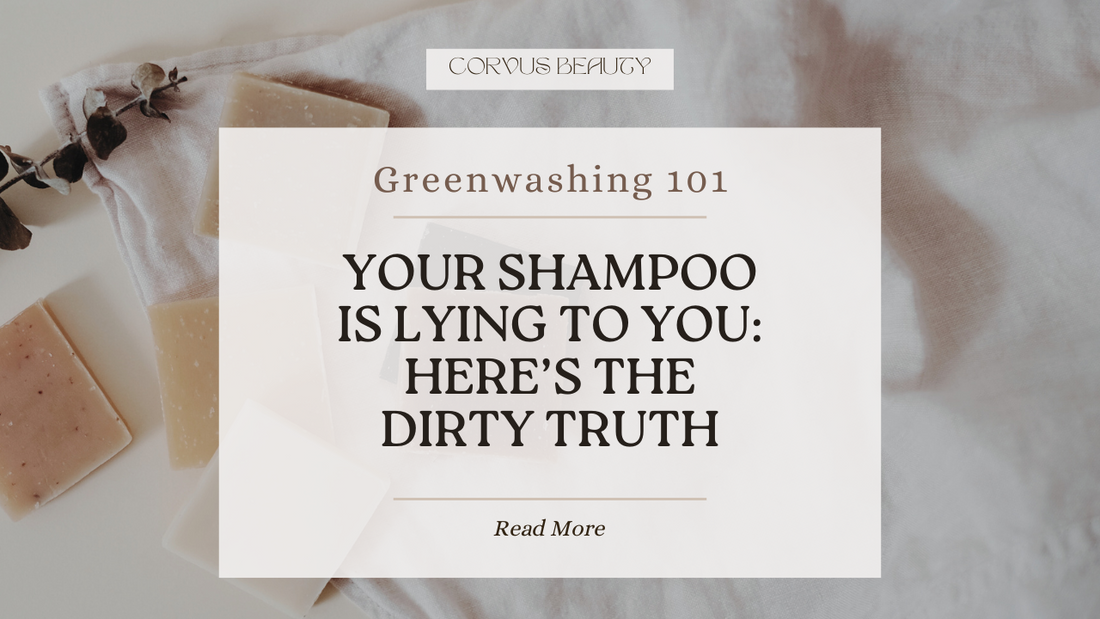
Your Shampoo Is Lying to You – Here’s the Dirty Truth Behind ‘Natural’ Shampoo
Share
In an era where “clean beauty” reigns supreme, it’s easy to fall for marketing that promises pure, natural, and chemical-free haircare. But the truth? Many so-called “natural” shampoos are little more than glorified soap—far too harsh for your delicate hair and scalp. Today, we’re busting some of the biggest myths about natural shampoo, exposing the marketing gimmicks, and giving you the real deal on what your hair actually needs to thrive.
The Castile Soap Myth: Why It’s Not the ‘Natural’ Shampoo You Think It Is
If you’ve ever dipped your toes into the DIY beauty world, you’ve probably seen countless recipes for homemade shampoo using Castile soap. The idea sounds great—Castile soap is plant-based, biodegradable, and free of synthetic detergents. But there’s one big problem: it’s not actually good for your hair.
Castile soap has a pH range of about 8.7 to 9.9, while your hair and scalp thrive at a pH between 4 and 6. When hair is exposed to an alkaline substance like Castile soap, the cuticle lifts, leading to frizz, dryness, breakage, and irritation. Studies have shown that prolonged exposure to alkaline hair products can weaken the hair shaft and contribute to scalp issues (International Journal of Trichology, 2014). So while Castile soap may be a dream for your skin, your hair is practically begging you to keep it away.
The Shampoo Bar Scam: When ‘Natural’ Isn’t Actually Hair-Friendly
You’ve probably seen shampoo bars popping up everywhere as an eco-friendly alternative to bottled shampoos. While true solid shampoos can be fantastic, many bars labeled as “shampoo” are actually just solid soap—and that’s a big problem.
Soap-based shampoo bars, like Castile soap, are made using either potassium hydroxide (for liquid soap) or sodium hydroxide (for solid soap). If you see these ingredients on your shampoo bar, chances are you’re washing your hair with something way too alkaline. The result? Hair that feels like straw, a scalp that feels tight and irritated, and that dreaded waxy buildup that leaves your strands looking dull and lifeless.
A 2018 study published in Skin Pharmacology and Physiology found that even a slight increase in shampoo pH can disrupt the scalp’s natural barrier, leading to increased dryness, itching, and even dandruff. Yet, many so-called “natural” shampoo bars still fall into this trap, leaving consumers confused and frustrated.
ACV Rinses: Do They Really ‘Balance’ the pH?
Apple cider vinegar (ACV) rinses are often recommended as a way to “balance” the pH after using a soap-based shampoo. And while ACV does have a lower pH (around 3), the idea that it can fully restore hair’s pH after an alkaline wash is flawed.
Here’s the issue: unless you’re carefully testing the pH of your rinse with scientific precision, there’s no guarantee you’re actually achieving balance. Too little ACV and your hair is still too alkaline. Too much, and you risk making your hair too acidic, which can also cause damage. Plus, constantly relying on an extra acidic rinse just to counteract the damage of an alkaline shampoo is, quite frankly, an unnecessary step when you could just use a properly formulated shampoo to begin with.
The Real Key to Natural Haircare: Ingredients That Work
Instead of falling for the “natural” marketing gimmicks, a better approach is to focus on products that are formulated with hair’s unique biology in mind. That means:
-
Using gentle, pH-balanced surfactants that cleanse effectively without stripping natural oils
-
Incorporating botanicals that nourish the scalp and strengthen hair. For example: Marshmallow Root, Colloidal Oats, and Calendula for sensitive scalp, or Rosemary, Nettle and Horsetail for strengthening hair.
-
Avoiding harsh soaps that leave hair feeling like a dried-out bird’s nest
At the end of the day, natural beauty isn’t about using the rawest, most unprocessed ingredients—it’s about choosing ingredients that work harmoniously with your body. A shampoo should cleanse, nourish, and protect your hair, not damage it in the name of being “natural.”
Final Thoughts: Focus on What’s In Your Shampoo, Not Just What It’s ‘Free From’
The beauty industry loves to slap “free from” labels on everything—free from sulfates, free from parabens, free from chemicals (which, let’s be real, is impossible because everything is a chemical). But what’s in your products is far more important than what they’re lacking.
Instead of focusing on avoiding every synthetic-sounding ingredient, ask yourself: Is this product safe? Is it effective? Is it supporting my hair’s natural health? True holistic haircare isn’t about fear-based marketing—it’s about creating rituals that nourish, connect, and celebrate the beauty of your natural hair.
So, the next time you’re shopping for shampoo, look beyond the buzzwords. Your hair deserves better than a marketing gimmick—it deserves real, effective, nature-inspired care.
Want to experience truly holistic, pH-balanced haircare? Explore my handcrafted, science-backed shampoo bars and give your hair the care it actually craves. SHOP NOW